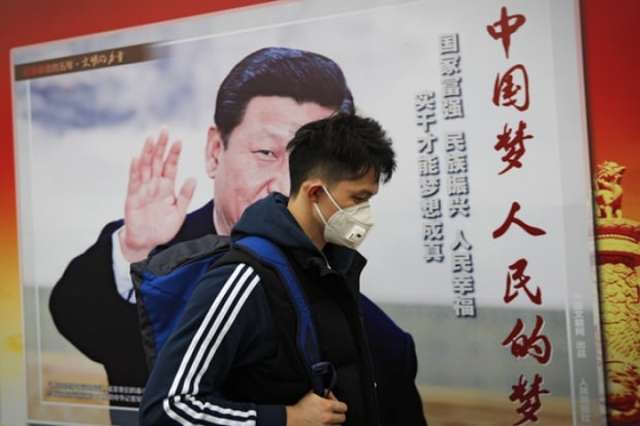“This is a game-changer,” said Nathaniel Keohane, vice president at the Environmental Defense Fund, a US-based environmental group. “This shows global leadership on the part of the Chinese government.”
China has already set out a target of ensuring its still-growing emissions peak by 2030, a target experts say should be met. Which means the highest point will have been reached and emissions will begin to fall.
However Keohane said the new emissions trading system could allow that peaking – essential if the world is to remain within the goals of the Paris agreement, to hold temperature rises to no more than 2 degrees C – to take place years earlier.
“That is the key question – can China now peak sooner?” said Keohane. “This process should show us more data [on power plants] and more transparency.”
Under the trading system, power plants will be issued with allowances to emit a certain amount of carbon dioxide. Plants that manage to undershoot their targets, by cleaning up and becoming more efficient, will be able to sell their excess permits to other generators, which will be expected to seek greater efficiency as an alternative to paying for their emissions.
China’s power sector is responsible for about 3.3billion tonnes of carbon emissions annually, making this potentially one of the world’s most important mechanisms for reducing greenhouse gases.
The move should put an effective national price on carbon emissions across the Chinese power generation sector. It has been many years in the planning, as the outlines of the system were set out in 2015, and that in turn built on years of trials of provincial emissions trading schemes. The concept has been under review by the Chinese government for more than a decade.
Putting in place the full structures and regulations necessary for the operation of the system will take several months or possibly a year more. Tuesday’s launch gave the go-ahead for important developments, such as the setting-up of an exchange on which emissions permits can be traded, but the Chinese government stopped short of setting out the allocations of emissions allowances to the relevant power plants.
The overall allocation of allowances in the system, across the power sector, is also not yet known, nor is the likely price on carbon that should result. These are likely to become clearer later in 2018.
When fully operational, the system will be extended over several years to cover eight sectors in total: power; iron and steel; non-ferrous metals, such as aluminium; chemicals; petro-chemicals; paper; building materials; and civil aviation.
The government has not yet released details of how the expansion of the system will work, but the power sector is seen as the first stage because it is the greatest source of emissions, and the easiest to measure and the easiest target for energy efficiency measures.
When fully up and running, which could be as soon as 2019, the initial power sector stage of the scheme will already be more than one and a half times bigger than the EU’s emissions trading scheme, currently the world’s largest.
Emissions trading as a concept was built into the Kyoto protocol of 1997. The idea is simple: in order to bring down greenhouse gases, a limit is set on the emissions of countries or companies, and within that limit they can choose whether to reduce their emissions, or pay others to do so. For instance, a rich country could choose to fund renewable energy projects in a developing nation, or a large company could buy emissions permits from cleaner rivals.
In this way, a notional price on carbon should emerge that gives companies a guide to the environmental costs and benefits of reducing their burden on the planet. Overall, given the limit imposed under the system, the result should be a net reduction in carbon.
The US has rejected several attempts to develop such a system as a way of reducing carbon emissions at a national level, though some states have proceeded with their own versions.
Paula DiPerna, a special advisor to the Carbon Disclosure Project, who helped set up the Chinese pilot project, said: “The world should welcome the announcement of a national cap-and-trade in China, which will set new standards for global carbon pricing, address climate change head-on, and help integrate environmental finance with general financial best practices.”
The emerging Chinese emissions trading system may give other governments a renewed interest in such measures.
However, trading systems have been bedevilled with difficulty. The EU’s trading system, the biggest in the world before the Chinese government’s measures, suffered several collapses in the price of carbon even before the financial crisis of 2008, which resulted in a decade-long low in the cost of allowances under the system.
More about: #China
















































